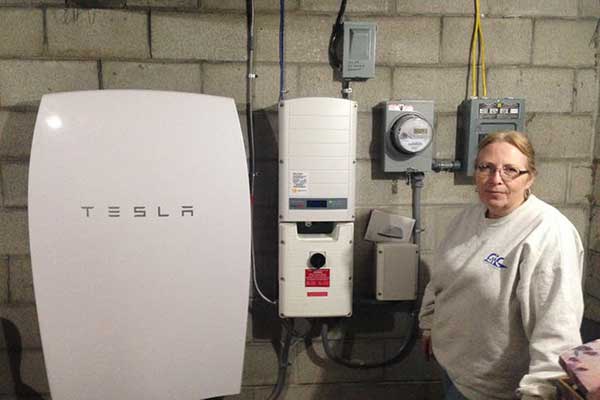Deployments of home energy storage systems reached record heights in the first quarter of 2018.
According to the latest U.S. Energy Storage Monitor report from GTM Research and the Energy Storage Association (ESA), 36 megawatt-hours of grid-connected residential energy storage systems were deployed in the first three months of this year, which is equivalent to the amount of residential storage deployed in the previous three quarters combined.
The report notes that California and Hawaii together constitute 74 percent of residential deployments on the quarter. “Changing net-metering rules and increasing customer interest in backup and solar self-consumption drove the residential energy storage market’s record quarter,” said Brett Simon, senior analyst at GTM Research and project manager for the U.S.
Energy Storage Monitor report. “More solar installers are offering residential storage products than ever before and see residential storage as an important area of business growth, particularly as utilities implement time-of-use rates and reduce net-metering compensation. These policy trends are expected to continue as utilities and regulators work to deal with increasing levels of solar PV penetration, which are driving increasing residential storage demand.
Several residential solar installers already claim storage attachment rates for new solar PV of up to 20 percent in select regions such as southern California, indicating a strong market for the technology.”
Residential storage systems made up 28 percent of all deployed megawatt-hours on the quarter, a record for the segment, but second behind the front-of-the-meter segment which accounted for 51 percent of deployments. The non-residential segment experienced a quiet quarter with 21 percent of megawatt-hours deployed, though nevertheless this segment almost tripled year-over-year.
In total, 126 megawatt-hours of energy storage were deployed across all segments during the first quarter of the year. This is up 26 percent over the fourth quarter of 2017, but down 46 percent year-over-year. However, the analysts at GTM Research cite Q4 2016 and Q1 2017 as “anomalies” due to the Aliso Canyon deployments during those quarters.
“With the U.S. energy storage market demonstrating a continued upward growth trajectory in the first quarter of 2018, the industry is moving closer to its vision of 35 GW of new energy storage installations by 2025,” said Kelly Speakes-Backman, CEO of ESA. “The growing list of states and markets ready to take action and remove barriers to cost-effective energy storage deployment promises the remainder of 2018 will yield similarly positive results.”
New this quarter, the U.S. Energy Storage Monitor adds Colorado and Nevada to its growing list of markets covered on a quarterly basis. Additional markets covered each quarter include Arizona, California, Hawaii, Massachusetts, New Jersey, New York, PJM and Texas.














Comments